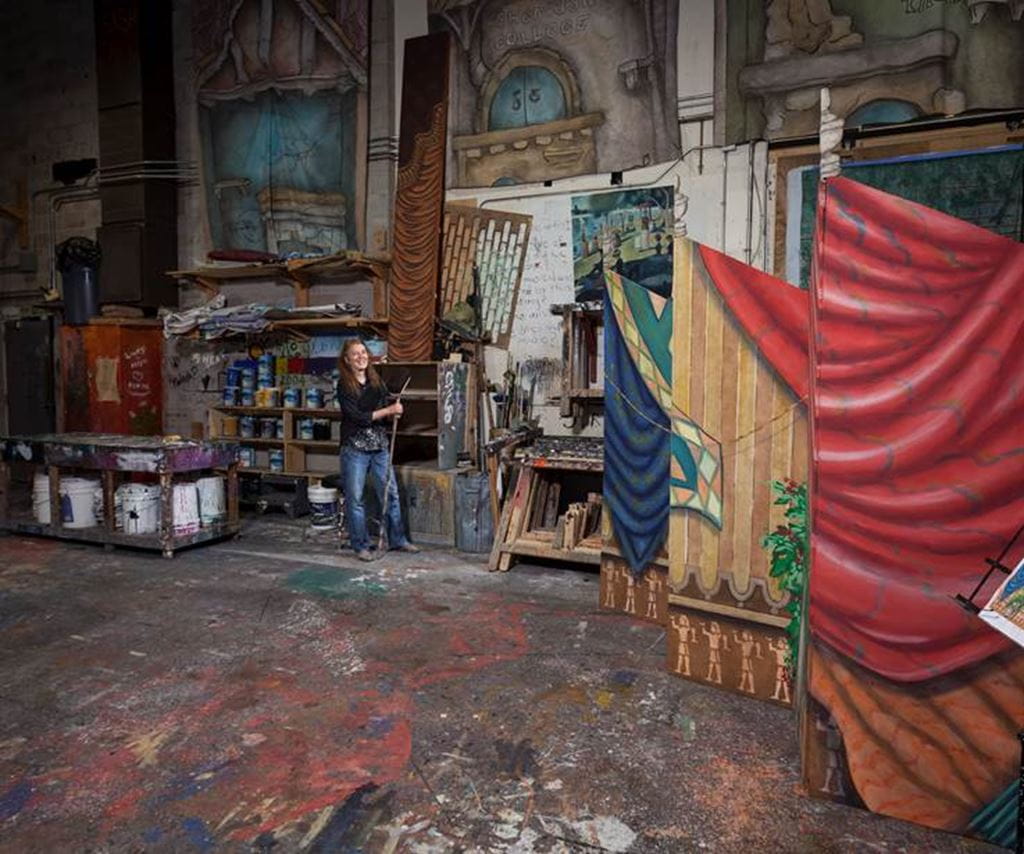
Setting the stage for success
 by Christine Szustaczek – Oct 3, 2014
by Christine Szustaczek – Oct 3, 2014 As a scenic art technologist, resident studio theatre designer, and part time faculty member, Denise Lisson spends her days helping students to grasp the personal and technical skills they’ll need to set the stage for their future success.
Lisson works in the Technical Production for Theatre and Live Events program, which prepares students to become part of a collaborative and creative team that supports a professional show. Students build scenery and props, make costumes, light the scenery, mix the live sound, put mics on the actors, and get involved in the rigging. “Doing it all gives them a better understanding of what everyone contributes.”
“The theatre isn’t a world where you can go into a hardware store and find what you’re looking for. Students need to go through all the steps to come up with a finished product” – Denise Lisson
“There are many pitfalls,” she warns. “Scenic art is rooted in symmetry and mathematics. Some students think they’re coming into an arts program and they won’t need math. Scenic artists realize design concepts and vision in full scale. Using the set model, students make samples of the finishes they see – marble, wood, wallpaper and tiles. They make three or four samples of each as well as build the tools to produce the finishes. The theatre isn’t a world where you can go into a hardware store and find what you’re looking for. Students need to go through all the steps to come up with a finished product.”
If the hard skills sound varied, the soft skills students need to thrive are equally complex. “I’ve always felt that the scenery is secondary to the actors and text. Once an actress begins speaking, she becomes the focus. It takes a unique type of person to not mind that their work fades into the background.”
Being a team player is another competency Lisson values. “Any head scenic artist can teach someone to paint, but you can’t teach someone to have the right attitude. Students need to have confidence in themselves, find ways to communicate with people, and not get lost in the mix. They need to bring their skills to the table and be willing to learn new ones.”
For Lisson, seeing the students take a project to completion is a highlight. “It teaches the importance of deadlines. When students see the first show they’ve helped to produce, they realize that they really did need to get their props built on time because the actors are sitting on the chairs they made.”
“When students see the first show they’ve helped produce, they realize that they really did need to get their props built on time because the actors are sitting on the chairs they made” – Denise Lisson
Lisson has good reason to know that these are the right lessons that students need to be learning. Having graduated from the program in 1982, she spent over 30 years as a successful scenic artist at a number of regional theatres and commercial scene shops. “When I left Sheridan, I thought I’d go out in the world and conquer it. I never imagined I’d be back. In a way, it’s humbling. It’s been great to bring back so much of what I’ve learned to the place that helped me get my start.”
Pictured at top of page: Sheridan Technologist Denise Lisson. Photo by Sheridan Photography Technologist Owen Colborne.
Written by: Christine Szustaczek, Vice President, External Relations at Sheridan.
Media Contact
For media inquiries, contact Sheridan’s Communications and Public Relations team.



